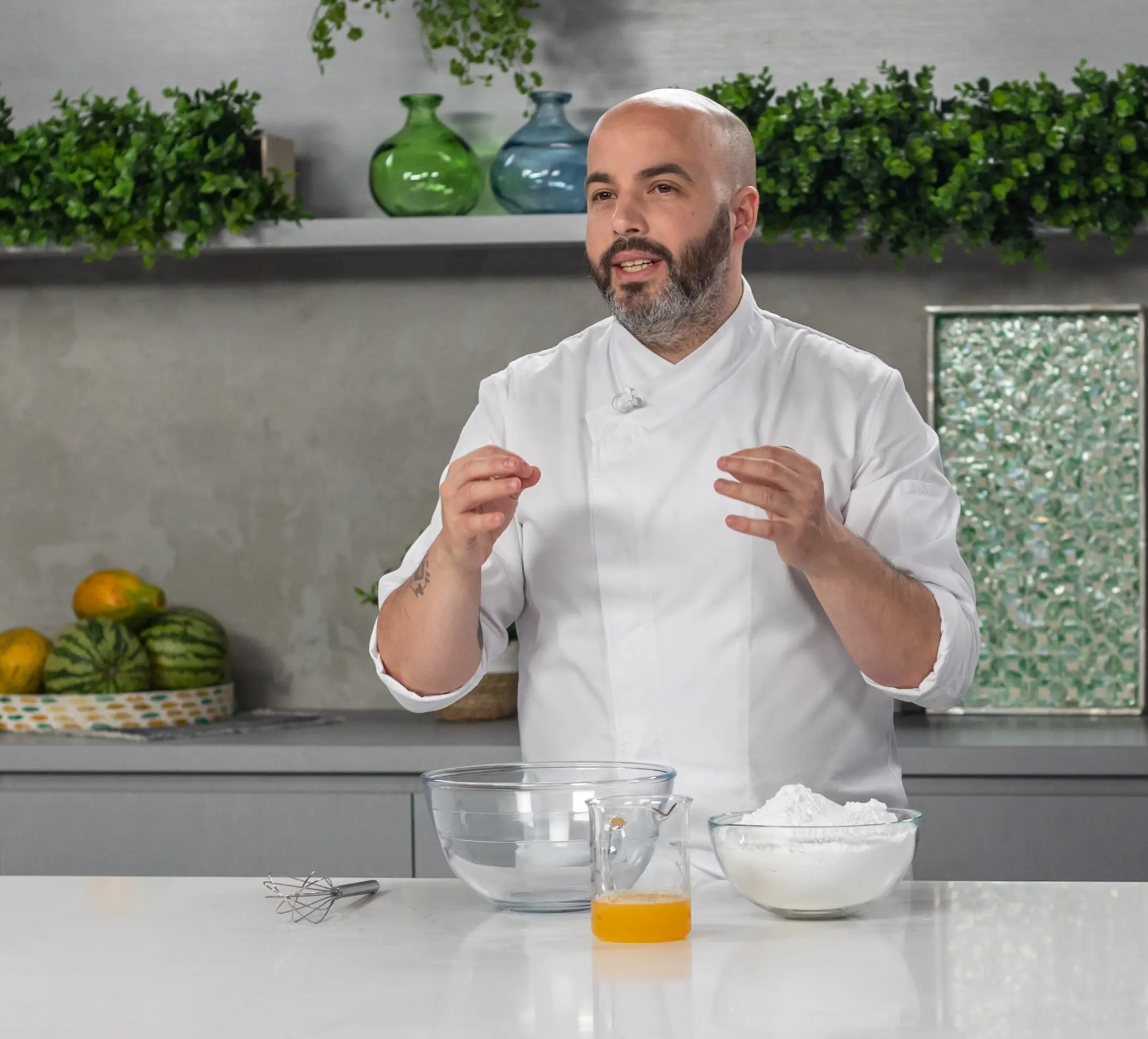What is a Sponge Cake?
Sponge cake, the cornerstone of many delightful desserts, is a light and airy confection characterized by its soft, tender crumb. Unlike dense and heavy cakes, sponges rely on aeration from beaten eggs to create their airy texture, making them perfect for layering with creams, fruits, or jams.
Types of Sponge Cakes
- Genoise: A classic Italian sponge cake known for its rich, buttery flavor and versatility in creating layered cakes or delicate pastries.
- Chiffon Cake: Light and fluffy, chiffon cake incorporates oil for moisture and is distinguished by its use of both egg yolks and whipped egg whites.
- Angel Food Cake: This ethereal cake gets its lightness from whipped egg whites and is traditionally made without butter or egg yolks, resulting in a fat-free delicacy.
- Victoria Sponge: A quintessential British treat, the Victoria sponge features layers of sponge cake filled with jam and whipped cream, topped with a dusting of powdered sugar.
- Devil’s Food Cake: Decadently rich and moist, Devil’s Food Cake is a chocolate lover's dream, with its intense cocoa flavor and tender crumb.
- Swiss Roll Sponge Cake: Also known as a jelly roll, this cylindrical sponge cake is filled with jam or cream and rolled into a spiral, creating a visually stunning dessert.
- Madeira Sponge Cake: A dense yet moist sponge cake with a slightly crisp crust, Madeira sponge is a popular choice for carving into shapes or serving as a base for elaborate decorations.
- Jaconde Sponge Cake: This decorative sponge cake is often used in French pastry making, featuring a delicate almond flavor and a flexible texture suitable for rolling or layering.
- Butter Cake Sponge: With its rich and buttery taste, this sponge cake is perfect for indulgent desserts or simple afternoon treats.
Preparation Process and Oven Temperatures
Achieving the perfect sponge cake starts with proper preparation and understanding the role of oven temperature. Here are some key steps to consider:
Preheat Your Oven: Always preheat your oven to the specified temperature in the recipe. This ensures even baking and helps the cake rise properly.
Room Temperature Ingredients: To encourage proper aeration and even mixing, ensure your ingredients, especially eggs and butter, are at room temperature before incorporating them into the batter.
Whipping Eggs: Beat the eggs (whole or separated) until they are light and fluffy. This aeration creates the structure and volume needed for a light and airy sponge.
Gentle Folding: When adding dry ingredients to the egg mixture, gently fold them in using a spatula to avoid deflating the batter.
Bake at the Right Temperature: The ideal oven temperature for baking sponge cakes typically ranges from 325°F to 350°F (160°C to 175°C), depending on the recipe. However, always refer to your specific recipe for precise instructions.
Avoid Overbaking: Keep a close eye on your sponge cakes as they bake and remove them from the oven once they are golden brown and a toothpick inserted into the center comes out clean or with a few moist crumbs attached.
Mastering the art of baking sponge cakes requires practice, patience, and a keen understanding of oven temperatures and techniques. With these insights and a spirit of experimentation, you'll soon be creating exquisite sponge cakes worthy of any occasion. Happy baking!
Want to Learn More?
Turn your pastry to success with PastryClass. Enroll new pastry skills, unleash your creativity, boost sales, enhance career opportunities, transition into an instructor role yourself, or simply discover a fresh passion. Learn with Cédric Grolet, Pierre Hermé, Ramon Moratò, Frank Haasnoot and more.
May 8, 2024 By PastryClass



























